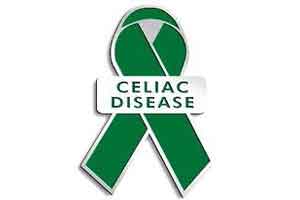- Home
- Editorial
- News
- Practice Guidelines
- Anesthesiology Guidelines
- Cancer Guidelines
- Cardiac Sciences Guidelines
- Critical Care Guidelines
- Dentistry Guidelines
- Dermatology Guidelines
- Diabetes and Endo Guidelines
- Diagnostics Guidelines
- ENT Guidelines
- Featured Practice Guidelines
- Gastroenterology Guidelines
- Geriatrics Guidelines
- Medicine Guidelines
- Nephrology Guidelines
- Neurosciences Guidelines
- Obs and Gynae Guidelines
- Ophthalmology Guidelines
- Orthopaedics Guidelines
- Paediatrics Guidelines
- Psychiatry Guidelines
- Pulmonology Guidelines
- Radiology Guidelines
- Surgery Guidelines
- Urology Guidelines
Exposure to Antibiotics during infancy linked to Celiac Disease

A nationwide study of children in Denmark and Norway has found that exposure to systemic antibiotics in the first year of life is associated with a later diagnosis of celiac disease. The findings, published in the journal Gastroenterology indicate that childhood exposure to systemic antibiotics may be a risk factor for celiac disease.
Stine Dydensborg Sander, Hans Christian Andersen Children’s Hospital, Odense University Hospital, Denmark, and colleagues in this observational study explored the association between exposure to a systemic antibiotic in the first year of life and risk of diagnosed celiac disease.
The final Norwegian cohort consisted of 537,457 children, with a median age at end of follow-up of 5.4 years. Celiac disease was diagnosed in 1,919 (0.36%) of participants. Systemic antibiotics in the first year of life were dispensed to 98,538 without celiac disease (18.4%) and to 390 with celiac disease (20.3%).
Data from two large subgroups within the final cohort looked at the potentially confounding impact of adjustment for the number of children's maternally reported infections as well as the duration of breastfeeding, examined 6 and 18 months postpartum for 55,082 Danish children (100 with celiac disease) and 53,257 Norwegian children (464 with celiac disease). Neither variable had a measurable impact, nor did prescriptions for topical antifungal drugs, although these were more common in those registered for systemic antibiotics.
Also Read: Common food additive cause of Celiac disease, finds new review
Key Findings:
- Exposure to systemic antibiotics in the first year of life was positively associated with diagnosed celiac disease in the Danish and in the Norwegian cohort.
- A dose-dependent relationship was found between an increasing number of dispensed antibiotics and the risk of celiac disease.
- No specific type of antibiotic or age period within the first year of life was prominent.
- Adjustment for hospital admissions with an infectious disease in the first year of life did not change the estimates; adjustment for the number of maternally reported infections in the child in 2 large sub-cohorts reduced the association slightly.
Also Read: Celiac Disease diagnosis takes 3.5 years in patients who have no GI Symptoms : JAMA
"These findings indicate that childhood exposure to systemic antibiotics may be a risk factor for celiac disease," the authors stated.
The authors concluded that the findings could have resulted from reverse causality, in which the symptoms of celiac disease can mimic infection, exaggerate infectious symptoms, or raise the risk of infectious diseases, thereby increasing the propensity for prescriptions for antibiotics.
For further reference log on to https://doi.org/10.1053/j.gastro.2019.02.039

Disclaimer: This site is primarily intended for healthcare professionals. Any content/information on this website does not replace the advice of medical and/or health professionals and should not be construed as medical/diagnostic advice/endorsement or prescription. Use of this site is subject to our terms of use, privacy policy, advertisement policy. © 2020 Minerva Medical Treatment Pvt Ltd